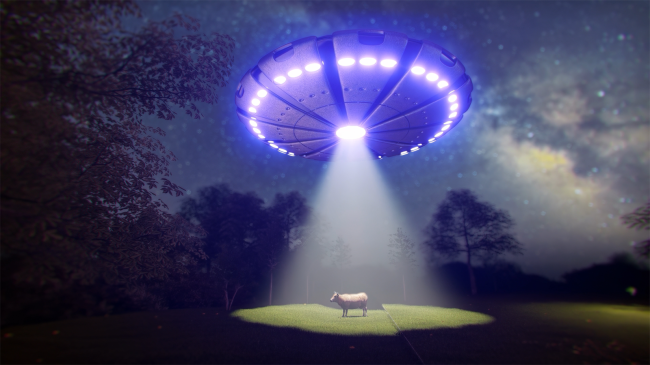
iStockphoto
NASA held a media briefing on Thursday to discuss its 33 page report on the organization’s year-long study into UFOs, or UAPs (Unidentified Aerial Phenomena), as the United States government now calls them.
The independent report was created by a group of 16 experts including former chair of Princeton University’s astrophysics department David Spergel, retired Navy captain and astronaut Scott Kelly, Warren Randolph from the Federal Aviation Administration, former undersecretary for Science and Technology at Department of Homeland Security Reggie Brothers, David Grinspoon from the Planetary Science Institute, and 11 others.
According to a NASA press release…
The report contains the external study team’s findings and recommendations which aim to inform NASA on what possible data is available to be collected and how the agency can help shed light on the origin and nature of future UAP. The report is not a review or assessment of previous UAP incidents.
While NASA is still evaluating the report and assessing the independent study team’s findings and recommendations, the agency is committed to contributing to the federal government’s unified UAP effort by appointing a director of UAP research.
A NASA liaison to the Department of Defense previously covered limited UAP activities for the agency, and the director role will centralize communications, resources, and data analytical capabilities to establish a robust database for the evaluation of future UAP. The director also will leverage NASA’s expertise in artificial intelligence, machine learning, and space-based observation tools to support and enhance the broader government initiative on UAP.
“At NASA, it’s in our DNA to explore – and to ask why things are the way they are. I want to thank the Independent Study Team for providing insight on how NASA can better study and analyze UAP in the future,” said NASA Administrator Bill Nelson.
“NASA’s new Director of UAP Research will develop and oversee the implementation of NASA’s scientific vision for UAP research, including using NASA’s expertise to work with other agencies to analyze UAP and applying artificial intelligence and machine learning to search the skies for anomalies. NASA will do this work transparently for the benefit of humanity.”
Nicola Fox, associate administrator of the Science Mission Directorate at NASA, added, “The director of UAP Research is a pivotal addition to NASA’s team and will provide leadership, guidance and operational coordination for the agency and the federal government to use as a pipeline to help identify the seemingly unidentifiable.”
No top-secret files were accessed by the group in creating this new UFO report, according to the Associated Press.
Instead, they utilized “unclassified data from civilian government entities, commercial data, and data from other sources to inform their findings and recommendations in the report.”
“Using unclassified data was essential for our team’s fact-finding, open-communication collaboration, and for upholding scientific rigor to produce this report for NASA,” said David Spergel, president of the Simons Foundation and chair of the UAP independent study team.
“The team wrote the report in conjunction with NASA’s pillars of transparency, openness and scientific integrity to help the agency shed light on the nature of future UAP incidents. We found that NASA can help the whole-of-government UAP effort through systematic data calibration, multiple measurements and ensuring thorough sensor metadata to create a data set that is both reliable and extensive for future UAP study.”
At present, analysis of UAP data is hampered by poor sensor calibration, the lack of multiple measurements, the lack of sensor metadata, and the lack of baseline data. Making a concerted effort to improve all aspects is vital, and NASA’s expertise should be comprehensively leveraged as part of a robust and systematic data acquisition strategy within the whole-of-government framework.
Moving forward, NASA should contribute to a comprehensive, government-wide approach to collecting future data. The importance of detecting UAP with multiple, well-calibrated sensors is paramount, and NASA could potentially leverage its considerable expertise in this domain to utilize multispectral or hyperspectral data as part of a rigorous data acquisition campaign.
The panel finds that artificial intelligence (AI) and machine learning (ML) are essential tools for identifying rare occurrences, potentially including UAP, within vast datasets.
This past June, the American space organization held its first public briefing on UFOs and revealed that there have been unexplained orbs spotted “all over the world.”
Read the entire 33 page report released on Thursday here.